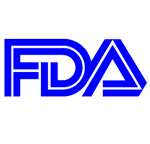 Will dairies with meat residue violations also have antibiotic residues in their bulk tanks? In an attempt to answer this question, in 2012, the FDA will relaunch its program to test for antibiotic residues in bulk tanks. In 2009, 861 of over 3 million tanker loads of milk (0.026 percent) tested positive for drug residues. Penicillin, a drug some individuals are hypersensitive to, was the main culprit.
Will dairies with meat residue violations also have antibiotic residues in their bulk tanks? In an attempt to answer this question, in 2012, the FDA will relaunch its program to test for antibiotic residues in bulk tanks. In 2009, 861 of over 3 million tanker loads of milk (0.026 percent) tested positive for drug residues. Penicillin, a drug some individuals are hypersensitive to, was the main culprit. In all, 1,800 milk samples will be collected from two groups of dairy producers. Producers on the FSIS Residue Violator List will account for 900 samples, with another 900 random samples from dairies throughout the U.S.
After FDA personnel visit the farm to collect samples, the milk will be tested for 26 drug residues. The process of collecting samples and testing will take about a week. Blind testing, which removes any connection to the farm of origin, will be done. Bulk tank samples are being taken to eliminate any antibiotic dilution that may occur by the time a tanker reaches the processing plant.
Unlike when this plan was initially proposed, blind testing will be done to remove the risk of producers being dropped by their cooperative and reduced the need for processor product recalls.
Why they're testing . . .
The FDA believes that repeat cull cow violations may correlate to potential milk residue violations.
Cull dairy cows and calves account for a large percentage of antibiotic residue tissue violations. An inspector-generated analysis of sampling violations in 2008, showed that dairy cows accounted for 44 percent and bob veal accounted for 46 percent of total violations, noted Pam Ruegg,with the University of Wisconsin, at the 15th UW-Arlington DairyDays. These numbers far outweigh violations caused by bulls, market hogs, and beef cows.
Producers whose animals test positive for antibiotic residues are added to the USDA's FSIS Residue Violation List. In cull cows, the most common residue compounds are penicillin, flunixin, slfadimethoxine, and desfuroylceftiofur.
Reduce your risk
Whenever a drug is used in an extra-label manner, the withdrawal time for meat and milk changes from what is indicated on the label, noted Ruegg. If you're unsure what the withdrawal time should be, visit the FARAD website to make sure you keep cows out of the tank and off the truck for an appropriate amount of time. If you are still unsure, test milk for residues before adding cows back to the bulk tank.








